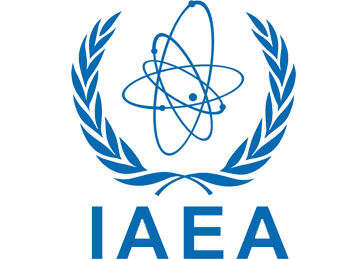The International Atomic Energy Agency has inspected the second of two suspected sites in Iran, as agreed with Tehran last month in a deal that ended a standoff over access, the agency said on Wednesday.
"As part of an agreement with Iran to resolve safeguards implementation issues specified by the IAEA, the Agency has this week conducted a complementary access at the second location in the country and took environmental samples," the global nuclear watchdog said in a statement, Reuters reported.
The samples and others taken at the first site will be sent to labs and analyzed for traces of nuclear material, since the agency's main task is to account for all nuclear material in the country to ensure it is not being used to make weapons.
Iran denies ever having a nuclear weapons program.
The UN agency requested access to two former sites that it suspected of undeclared nuclear activity in March, but Iran refused to allow inspectors into the locations, arguing that the request was based on invalid and safeguards-irrelevant information that are “neither publicly available [open-source], nor valid and verifiable”.
“Any information claimed to be obtained through a so-called secret operation or intelligence activities, and any subsequent use of them as basis for the requests are not consistent with the agency’s statute,” Iran informed IAEA’s Board of Governors in June.
IAEA’s source of information was Israel’s seizure of what is claimed was part of an “archive” of Iran’s past work in the early 2000s at these sites, which Iran said was inadmissible. It also said the dossier on those activities has been closed under the 2015 nuclear deal between Iran and the world powers.
Nevertheless, the board soon passed a resolution submitted by France, Germany and the United Kingdom, urging Iran to stop denying the agency access and fully cooperate with it.
IAEA chief Rafael Grossi traveled to Tehran in late August to discuss the issue with Iranian officials.
After two days of consultations, including a meeting between Grossi and President Hassan Rouhani, Tehran and the UN nuclear agency finally reached an agreement on the resolution.
Iran agreed to voluntarily provide IAEA with access to the two locations to facilitate its verification activities while the UN agency assured that it would not make further requests for access to locations other than those declared by Iran under its Comprehensive Safeguards Agreement and Additional Protocol.
The agency subsequently conducted complementary access, under the Additional Protocol, at one of the two specified locations and took environmental samples for analysis.
Addressing a meeting of IAEA’s Board of Governors in mid-September, Grossi welcomed the agreement, hoping it would “reinforce cooperation and enhance mutual trust”.
He also assured that the agency would carry on its regular responsibilities in Iran regarding verification of the non-diversion of nuclear material declared under its Safeguards Agreement as well as evaluations of the absence of undeclared nuclear material and activities.
The IAEA chief later announced that the second inspection would take place in late September, the analytical results of which sample could become available in months.


